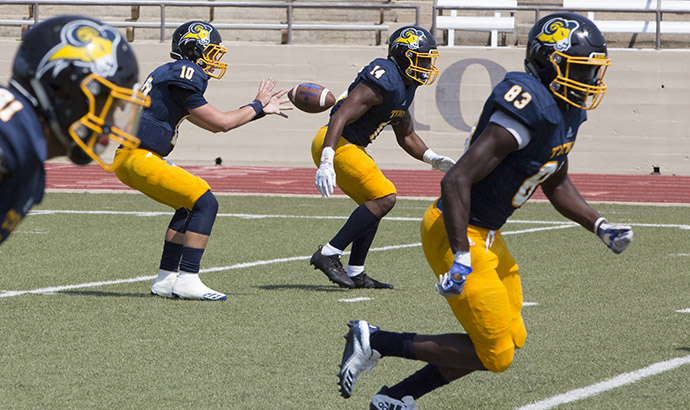Visit new art exhibition 'ANIMUS' on display from Oct. 16 to Dec. 5

Join us for the second exhibition, ANIMUS, in the Bernice Coulter Templeton Studio gallery. We'll have an opening reception where visitors can talk with the artists and curator as well as a session for the Mitchell-Reed Lecture Series. Mark your calendar and we hope to see you there!
Exhibition Dates: Oct. 16 - Dec. 5
Opening Reception: Oct. 21, 2-4 p.m. Bernice Coulter Templeton Studio gallery
Mitchell-Reed artist lecture: Oct. 24, 12:15-1:30 p.m. Bernice Coulter Templeton Studio gallery
About the Exhibit
The raw material of personal experiences has supplied the heavy demand artists require for inspiration. While the art produced by artists who work in this vein is charged with personal and sometimes hidden symbolism, the observer is free to handle it in an arbitrary manner.
"If it could be shown in the laboratory that a well-organized line figure imposes itself upon all observers as basically the same shape, regardless of the associations and fantasies it stirs up in some of them because of their cultural background and individual disposition, one could expect the same, at least in principle, with respect to people looking at works of art."-- Art and Visual Perception, Rudolf Arnheim
In the art exhibition ANIMUS curated by Thomas Motley, artists Genevieve Armstrong and Juan Cruz dig deep in their well of personal experiences. They offer visitors to their exhibition the opportunity to experience their wealth of internal and external explorations revealed through their art. Gradually the meaning of each emotionally and culturally charged piece begins to fall in place for the viewer. The viewer is engaged by all the powers of the mind as they begin to perceive each work from the perspective of the artist and then of themselves. This is what the artist works for.
As high-tech machines are taking over our lives, an exhibition that focuses on the human being and all the successes, frailties and inhumanity it can represent is refreshing. When all else is removed we are left with flesh and blood and self-examination as we seek to explain the impact of external forces on our personal experiences.







